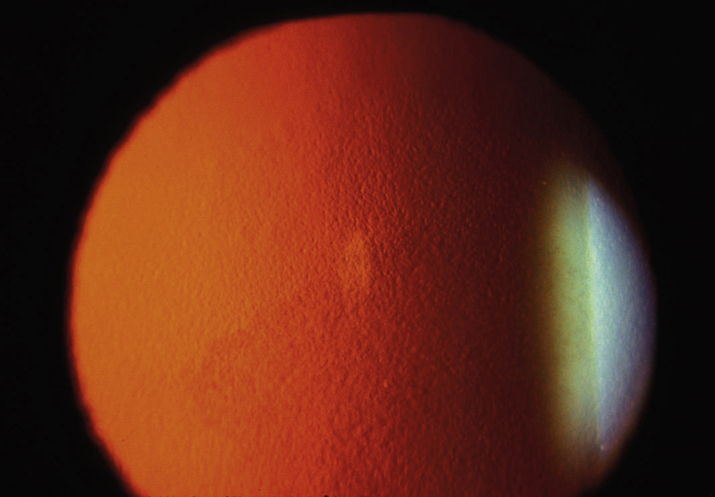Critical
Cornea guttae with stromal +/- epithelial edema (see Figure 4.26.1). Bilateral, but may be asymmetric.
Central cornea guttae without stromal edema is called endothelial dystrophy (see Figure 4.26.2). This condition may progress to Fuchs dystrophy over years. |
Other
Fine pigment dusting on the endothelium, central epithelial edema and bullae, folds in Descemet membrane, stromal edema, subepithelial haze, or scarring.

